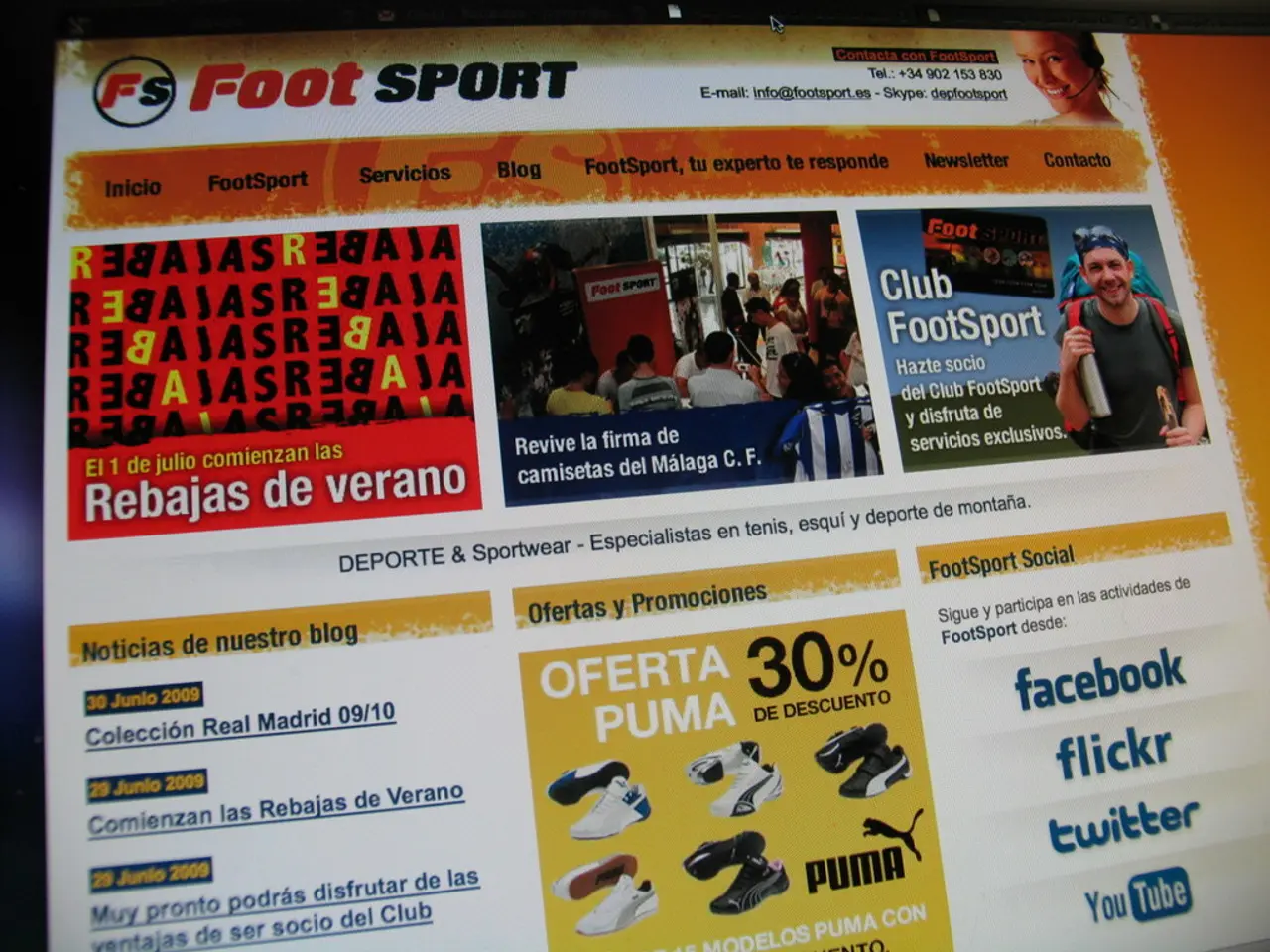Generating Accessible Infographics Through Our Platform: A Step-by-Step Guide
Creating infographics that are accessible to people with visual disabilities, such as color blindness and low vision, requires careful consideration of key practices. These practices focus on high contrast, readable fonts, clear structure, and the use of accessible design tools.
High Contrast Colors
To ensure text and graphic elements stand out clearly, it's essential to use a high contrast color palette. Avoid problematic color combinations for color blindness, such as red and green, and utilize tools like Adobe Color to create color-blind safe themes and preview designs under common color blindness types [4]. The contrast between background and text should be strong to aid those with low vision [2][1].
Large, Legible Fonts
Use large, legible fonts with a minimum size of 12pt (16 CSS pixels) or larger. Sans-serif fonts, such as Arial or Verdana, are more readable for low vision and dyslexic readers, while decorative, narrow, or overly stylized fonts should be avoided [5][1][2].
Clear Visual Hierarchy and Layout
A well-spaced, structured layout is crucial for accessibility. Create sections delineated by boxes or clear labels, and differentiate content visually using icons and headings. Using icons alongside or instead of color coding helps color-blind users understand visual data cues [1][2]. Maintain a logical content structure with headings and lists for screen reader compatibility and cognitive accessibility [3][5].
Icons and Alternative Cues
Icons and symbols paired with color ensure key points can be understood without relying on color alone, aiding color-blind and low-vision users [1][2].
Accessible Design Tools
Utilize dedicated accessible design tools that check for color contrast, font size, and structure compliance. Adobe Illustrator in conjunction with Adobe Color can simulate color blindness and assist in creating accessible color schemes [4]. Software and platforms like Venngage offer accessible infographic templates incorporating these principles [1].
Alternative Formats
Provide alternative accessible formats such as a long text transcript or HTML version for screen readers, and use alt text or descriptions for images that carry important information [3].
By following these strategies, infographics can be made perceivable and understandable by people with a range of visual disabilities, including color blindness and low vision [1][2][3][4][5].
Additional Tips
- Use "Skip Navigation" links to make your graphic transcript easy to locate.
- Over 90% of the visually impaired use screen readers.
- Within your transcript, make sure to use H2/H3 subheadings to ensure your content structure is easy to understand.
- Offering alternative file formats is always a good idea. For example, you can download your infographic as a PDF file and offer it as a free download.
- It is recommended to avoid using shades of gray, yellow, and orange when choosing colors for an infographic.
- When designing an infographic, it is important to consider both color blindness and low vision.
- To learn more about accessible design, consider reading guides such as "How to Make an Infographic in 5 Steps", "How to Use Color Blind Friendly Palettes to Make Your Charts Accessible", and "How to Pick Colors to Captivate Readers and Communicate Effectively".
- To ensure an infographic is easy to read for people with poor vision, designers can use an accessible design tool to run contrast-checking and accessibility testing.
- More than 7,2 million adults (ages 16 to 75+) were reported to have a visual disability in the United States in 2016.
- Use Text-to-Speech tools to simulate screen reader user experience and make sure your transcript is clear enough when it is being read to you.
- It is important to provide a detailed text transcript for your infographic.
- The concept of inclusive visual design includes as many people's needs and abilities as possible.
- More than 60 million Americans have a disability of some kind.
- Following these steps will make your infographic search discoverable and more engaging.
- Smashing Magazine suggests sticking to 16px fonts when visualizing a lot of information within one image.
- Always make it clear where the transcript can be located by using headings like "Text Alternative" or "Text Version".
In the process of creating infographics that cater to people with visual disabilities, the use of a high contrast color palette is vital to make text and graphic elements easily discernible [4]. To this end, one should avoid color combinations that pose problems for color blindness, such as red and green, and employ tools like Adobe Color to develop color-blind safe themes and preview designs under common color blindness types [4].
Moreover, when it comes to icons and symbols, pairing them with color helps color-blind users comprehend visual data cues [1][2]. This enhances the accessibility of the infographic by ensuring that key data points can be grasped without depending solely on color.




